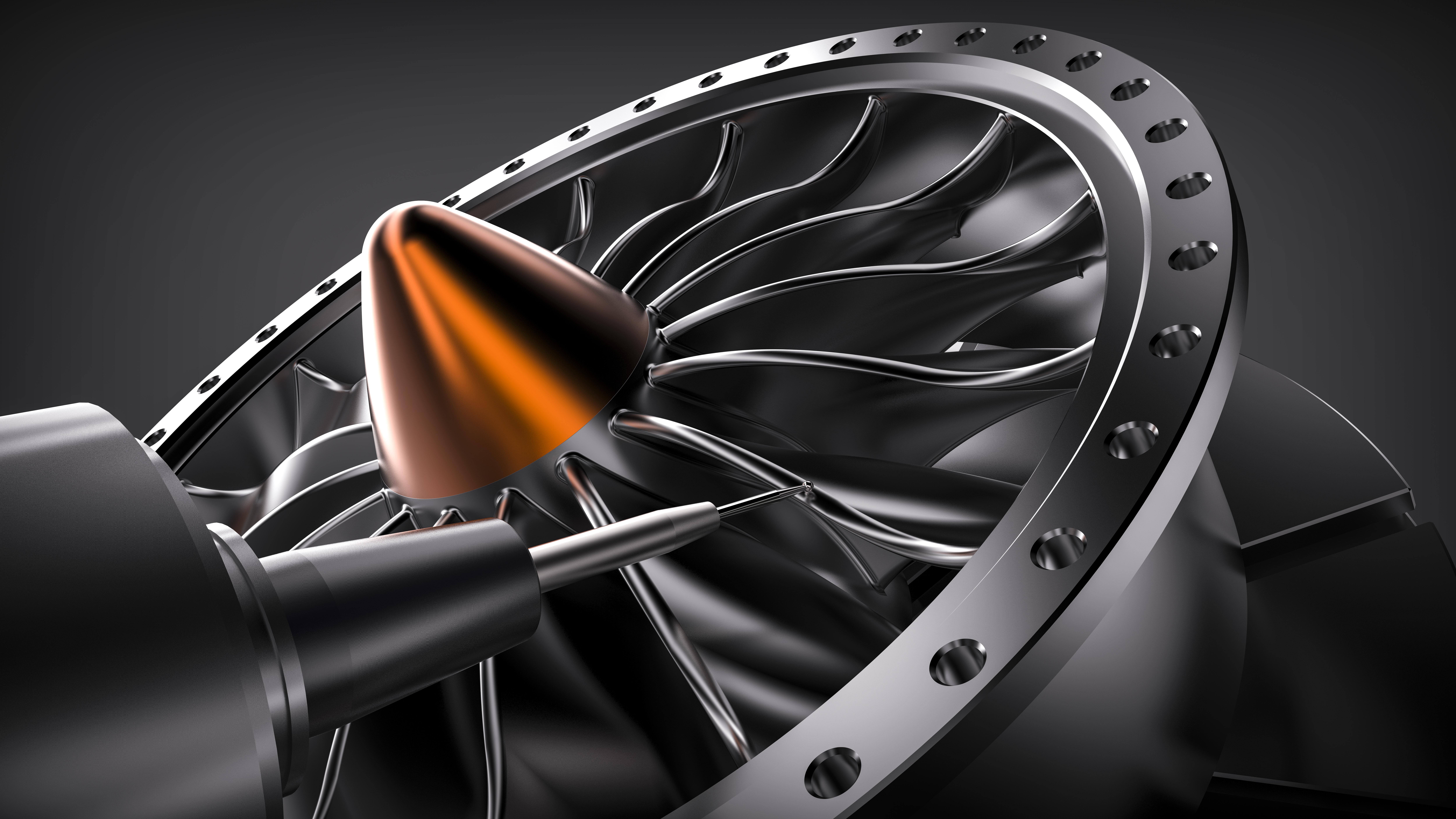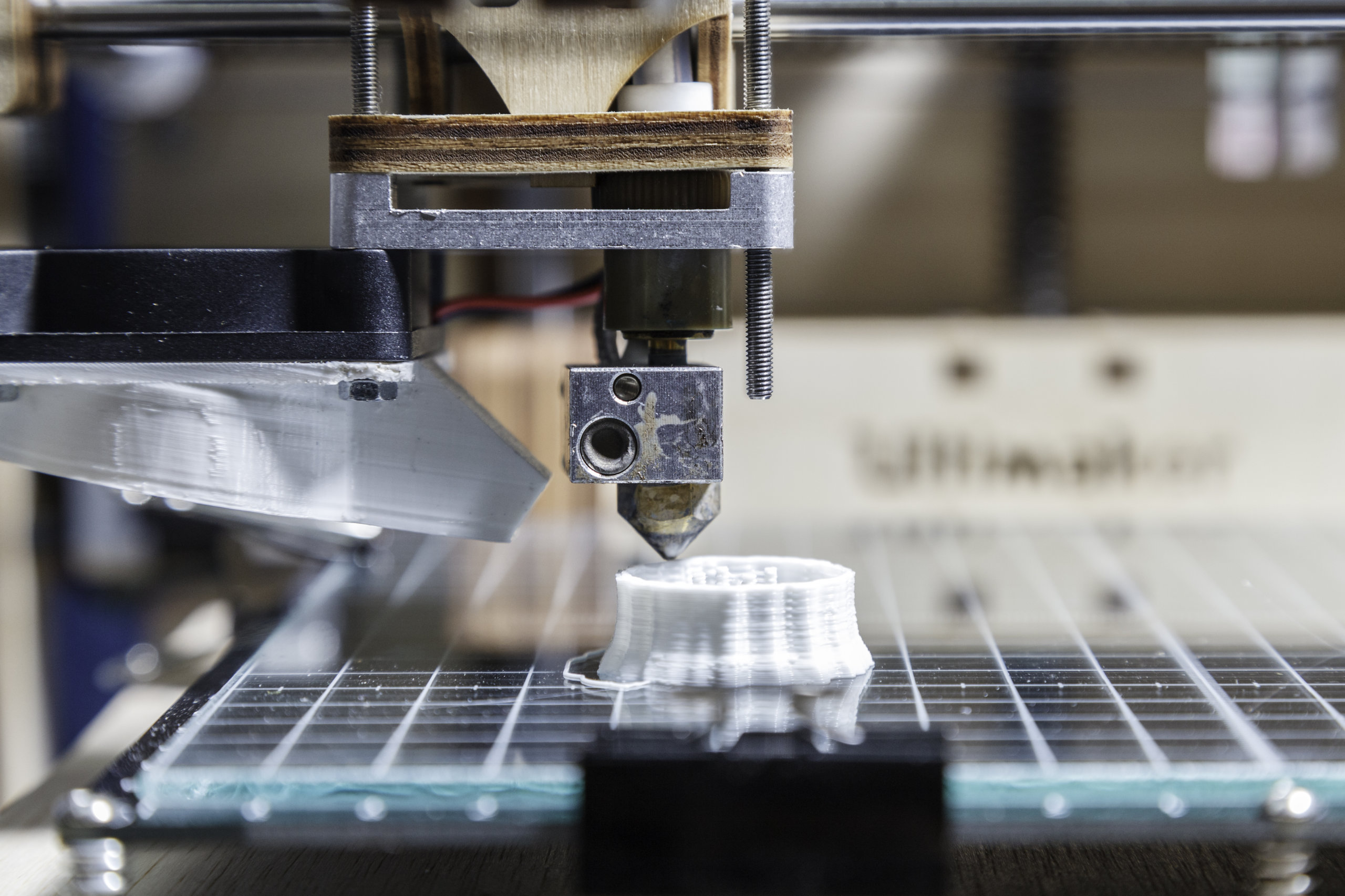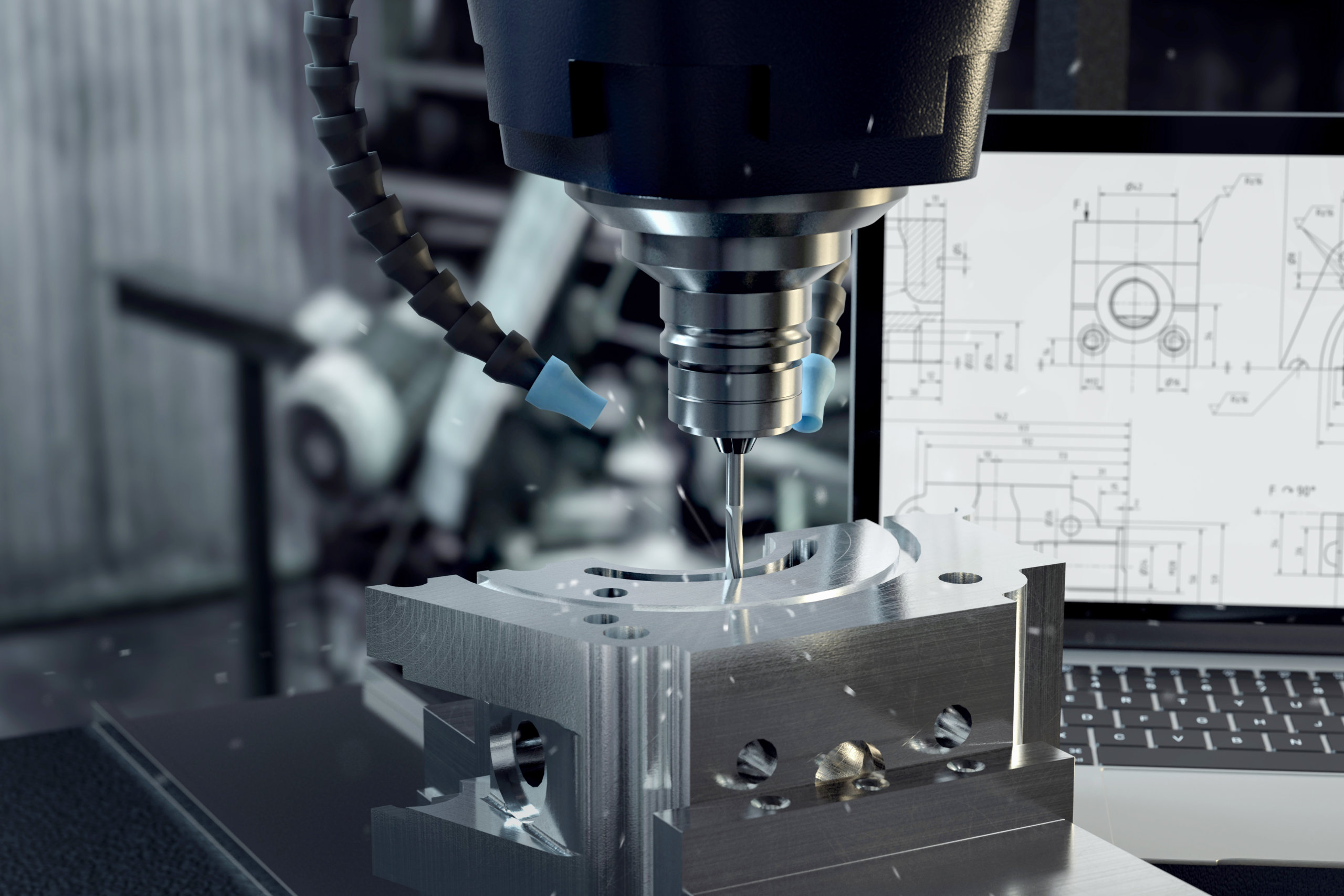Time to read: 6 min
The prototyping process is the method of physically building a model or draft of an idea. As engineers, prototyping is a crucial step in the product development process whereby a solid model comes to life, and we can touch, see, and interact with it.
Historically, traditional prototyping has been a lengthy and expensive process, but modern, rapid prototyping allows ideas to take shape in a matter of days. CNC machining is an excellent choice for rapid prototyping.
Read on to learn more about traditional prototyping, the CNC prototyping process, rapid prototyping industries, the benefits of using CNC machining for rapid prototyping, and the limitations of using CNC machining for rapid prototyping.

Traditional vs. Rapid Prototyping
Traditionally, prototyping for product development has involved the following steps:
- Spending days or weeks designing a product with solid modeling software to create a 3D CAD model and a set of 2D drawings.
- Getting quotes to fabricate the necessary components from several manufacturers.
- Waiting weeks or months to receive your machined prototype, usually without much communication.
Traditional prototyping relies on antiquated methods like sand casting and mock-ups using clay molding, wood, wire, and tape. Although claymation movies may be amazing, those antiquated methods are best left to filmmakers. With the invention of CNC machining, 3D printing, and rapid prototyping methods, today’s engineers can fabricate prototypes faster than ever before.

Traditional Rapid Prototyping Processes
There are many traditional rapid prototyping production methods to choose from, each with benefits and limitations, including:
- Stereolithography (SLA) 3D Printing
- Fused Deposition Modeling (FDM) 3D Printing
- Selective Laser Melting (SLM), aka Powder Bed Fusion 3D Metal Printing
- Selective Laser Sintering (SLS) 3D Printing
- Sheet Lamination
- Digital Light Processing (DLP) 3D Printing
- Binder Jetting 3D Printing
3D Printing Traditional Prototyping: Advantages and Disadvantages
One concern with traditional rapid prototyping methods like 3D printing is that they create something that looks like the 3D model and may even be able to move or function as intended but is dimensionally inaccurate compared to CNC prototypes. However, there is a time and place to utilize 3D printing for rapid prototyping. One of the benefits of 3D printing for prototyping is that it provides a cost-effective option when you’re looking for a prototype for display purposes only.
Rapid prototyping with 3D printing also yields parts that are of a different density with different material properties than the final product. This is due to the narrow range of available materials for 3D printing — though the number of materials that can be utilized in additive manufacturing is continuously growing. For instance, metal 3D printed parts are often more porous, which can cause mechanical failures and variable density if not subsequently processed.
CNC Rapid Prototyping Processes
The CNC machining process has emerged as a good choice for rapid prototyping, especially CNC prototyping machining for precision prototypes, due to the rising popularity of digital manufacturing. Here are some common processes for rapid prototyping with CNC machining:
- CNC milling for the most complex geometries and quick material removal.
- CNC turning for cylindrical parts like shafts or pins.
- Electrical discharge machining (EDM) for delicate, complex geometries
CNC rapid prototype machining process is optimal when you need an engineering or production prototype that looks, feels, and functions as the finished product. And, with digital manufacturing infrastructure like Fictiv, you can get instant quotes for CNC machined prototypes with turnaround times quickly (as fast as 3 days).
Industries That Can Benefit from Rapid CNC Machining Prototypes
Many industries can benefit from prototype CNC machining for functional or rapid CNC-machined precision prototypes. Some of the most common industries that rely on the CNC machining process for prototypes include:
- Aerospace
- Automotive
- Medical
- Agriculture
- Consumer Products
- Electronics
Benefits of CNC Machined Prototypes
Structural Integrity
CNC machined components offer greater strength and similarity to desired finished product mechanical and material properties than 3D printed parts. Among these desired properties, structural integrity is arguably the most important — structural integrity, is defined as the material’s strength, stiffness, and hardness.
With additive manufacturing methods, layer fusion is not always 100% successful, which results in voids, porosity, or layer shifting. These inconsistencies can adversely affect the finished product’s structural integrity. With subtractive manufacturing (CNC machining), your prototype is carved from solid, homogenous material stock, which reduces the possibility of geometric discontinuity.
Click here to get an instant quote today.
Precision
CNC machining is one of the most reliable manufacturing methods for parts with tight tolerances. CNC machining can maintain tolerances as tight as one-ten-thousandth of an inch, whereas 3D printing can only hold a few thousandths of an inch (about an order of magnitude of difference). Precision prototyping CNC machining is optimal for producing parts with complex geometries and tolerance requirements.
Dimensional Accuracy
Whether you’re CNC machining a prototype out of plastic or metal, you get a higher level of dimensional accuracy with CNC machining over other rapid prototyping methods. CNC machining can easily produce parts with complex geometries at a high level of accuracy.

Material Selection
Simply put, CNC machining can be performed on a variety of materials ranging from soft and ductile to hard and rigid and from metal alloys to wood to plastic. In part, CNC machining is versatile because it is a solid manufacturing method that can be utilized with virtually all solid materials. You can even machine vinyl, fiberglass, carbon fiber materials, laminates, fibreboard, and corrugated plastic!
Product Size
Take a look at this massive CNC machine touted as the largest in the world. It’s capable of producing parts that are up to eight feet tall! The Thermwood M400 weighs an impressive 51 tons and has a head that can generate speeds of up to 20k RPM. While this particular CNC machine isn’t available for purchase, it shows just how big of a part you can manufacture with CNC machining. For prototyping, that capability can be an important feature if you need to avoid extensive assembly steps to get a prototype.
Of course, there’s the self-proclaimed world’s largest 3D printer — a University of Maine’s Advanced Structures and Composites Center creation — that has a 100-foot bed. Still, large-part production is optimal with CNC machining.
Prototype CNC machining services are an ideal process for mid-stage functional prototypes. CNC machining is fast with the right company, like Fictiv. Fictiv can help you accelerate development cycles with rapid prototyping by providing instant online quotes, intelligent DFM feedback, and quick lead times.
- Finishing, masking & hardware installation
- CNC Milling, CNC turning, gear hobbing, EDM
- Tolerances as tight as +/- 0.0002″
Limitations of Rapid CNC Machined Prototypes
The following are key limitations to consider when choosing between CNC machining and other methods for rapid prototyping:
- Other rapid prototyping methods may result in shorter turnaround times (Note: This is unique to prototyping runs as larger volume production lead times are typically shorter with CNC machining)
- With additive manufacturing, you can create lightweight prototypes for display purposes because you can leave the internal cavity hollow. Achieving the same with CNC machining is much more complex.
- As far as material waste is concerned, additive manufacturing is a more sustainable choice due to the layer-building nature of additive manufacturing (Though you can often recycle the chips that result from CNC machining).
CNC Machining Rapid Prototyping with Fictiv
Fictiv has a proven track record of providing our customers with high-quality, precision prototypes for various industries. Check out what our customer, Honeywell, has to say about their experience working with Fictiv for product development.
Additionally, here are some of the benefits we offer customers to ensure a successful CNC machining prototype result:
- Inspection reports included with every order
- All CNC machined parts are inspected with hand metrology, CMM, or laser scanners
- A network of highly vetted manufacturing partners with expertise in CNC machining
- ISO 9001 certification
- Quality guarantee
Regardless of the type of CNC services you need, Fictiv makes it faster, easier, and more efficient to source and supply quality mechanical parts. Head to Fictiv.com to learn more about our CNC Machining Service, then create an account and upload your designs to get an instant quote and free DFM feedback today!










